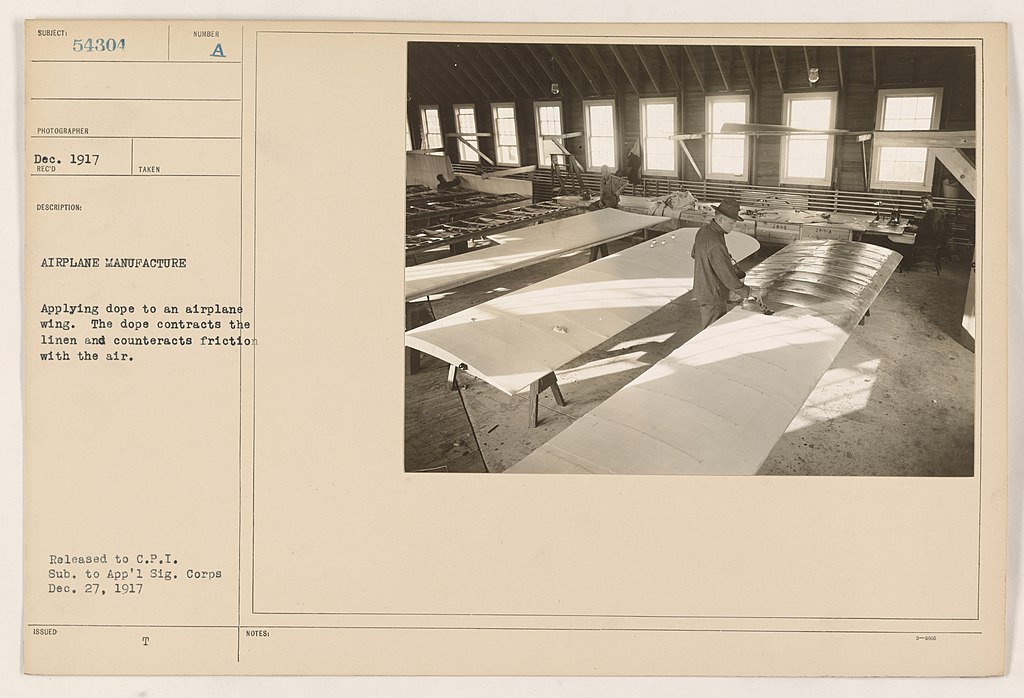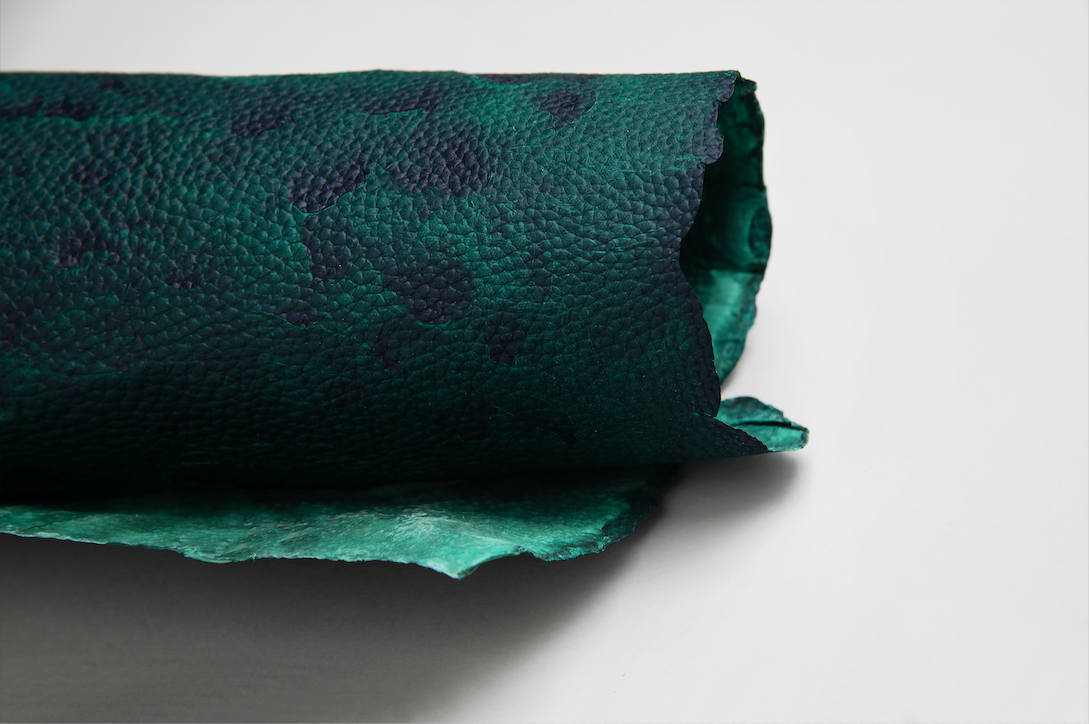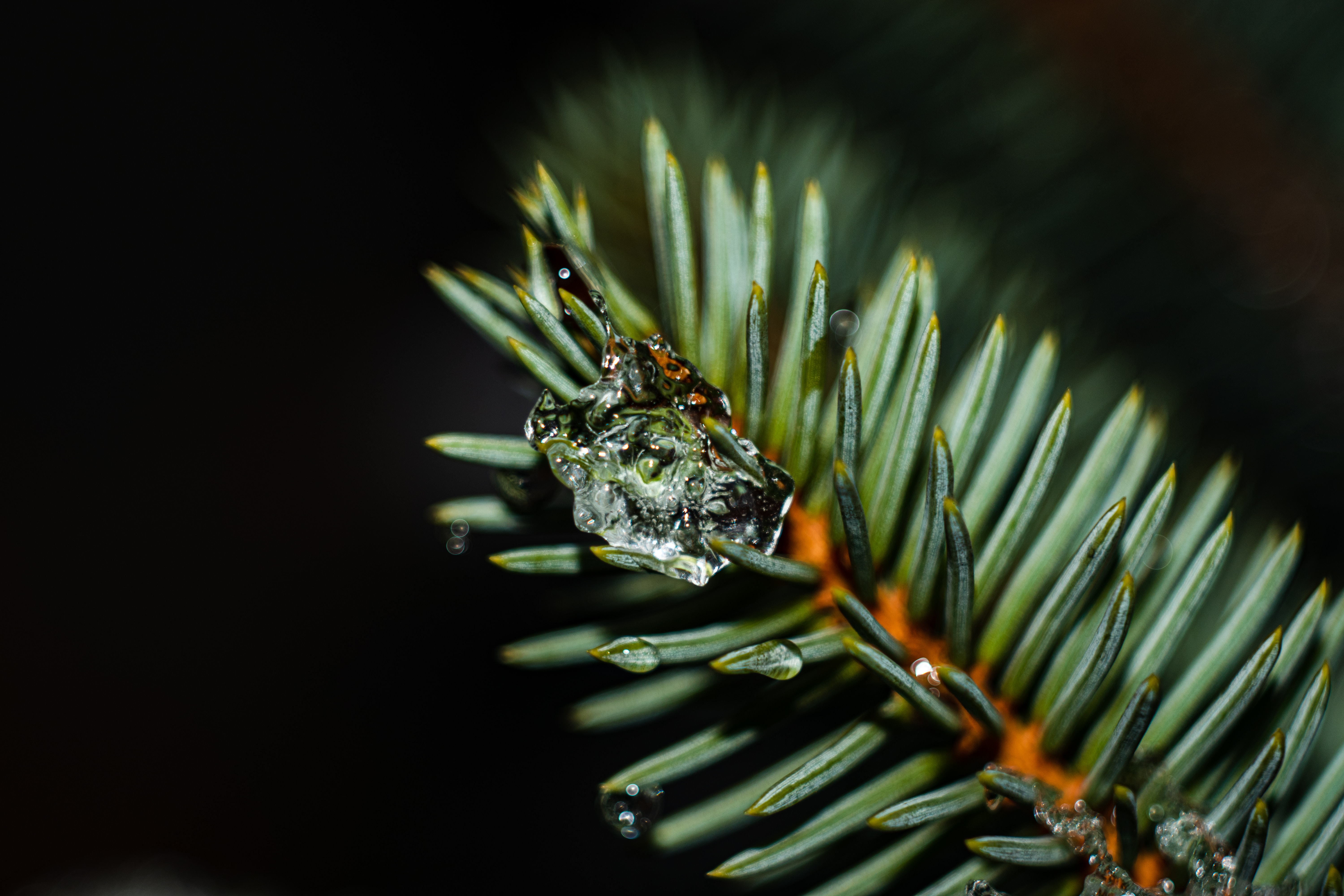“Dope” means cool, it means drugs, and it even means sauce, and the word is critical to the design and engineering of materials.
Within the word’s meaning is a piece of history that even a source referenced by The Oxford English Dictionary doesn’t get quite right.
The tl:dr is that in material science, dope means goop, slime, thick sauce - any viscous liquid. If you’re interested in materials, It’s worth knowing what dope is. Read on for more.
Dutch Sauce. 1850’s–
The word “dope” originally borrows from an archaic Dutch word: “doop”. It’s an Americanism — an English word that evolved in the Americas. In the late 18th century it simply meant thick sauce - the kind you might “doopen” or dip your chip into. It likely evolved in the colony of New Amsterdam, then controlled by the Dutch, which is now modern day New York.
It’s rare that you’ll hear someone use ‘dope’ at the dinner table, but in pockets throughout the US it’s still used as a term for saucy foods like soda syrups and ice cream toppings such as chocolate syrup (American Heritage Dictionary).
This definition also extended to medical preparations, especially those that had a stupefying effect. This is where the term connects to illicit substances, especially for dark, molasses-like opium (dope that makes you dopey). From here, the word has taken on the more general definition that refers to many other illicit drugs, including drugs for humans and for racing horses.
But according to the OED, the first in-print usage of dope was related to a sticky substance applied to shoes.
“Nothing was known of the mysteries of ‘dope’—a preparation of pitch which, being applied to the bottom of the shoes, enables the wearer to glide over snow softened by the warmth of the sun.”
I came across this reference from OED in Fake Silk by Paul Blanc, an incredible and engaging history of the Viscose industry. This struck me as odd. Why would someone put pitch on their shoes to make them glide better? That’s how you fall down.
This contradiction stuck with me. Digging into the original sources mentioned in OED, I found the reference. Here“the shoes” actually refers to snow shoes, yet this doesn't actually make sense. Snow shoes are not for gliding.
The real answer is that two hundred years ago, Americans called skis snowshoes. This reference in OED to dope as something applied to the bottom of shoes is not even close. It’s not shoes, it’s not snowshoes. This early use of the term dope actually refers to ski wax.

Rant over. Onto the material science.
Proofing Airplanes with Dope. 1910–
Early airplanes and dirigibles were covered in fabric — cotton canvas. Cotton naturally absorbs water and cotton textiles are not windproof. It made for soggy and heavy planes. The solution? Dope.
It came in the form of various viscous gels or dopes made from chemically modified cellulose. Called proofing, the cellulose dopes hardened the fabric and made it wind and waterproof. The process of coating the canvas like this is a forerunner to how synthetic and bio-based man-made leathers are made today.
The original dopes were made from nitrocellulose, which was notoriously flammable during and after application. To deal with this, pigments were added to the dope. This ‘contamination’ is referred to as doping. The nitrocellulose dopes were doped with pigments that could act as flame retardants. One of the first methods was to add Titania (titanium dioxide). It not only acted as a flame retardant, but also protected the coated canvas from UV degradation from the sun.
Nitrocellulose was the first man-made plastic. It is made from cellulose from plants and was used as a textile fiber and a plastic for hard-goods like billiard balls. If you remember hearing about billiard balls that would burst into flames — these were made from nitrocellulose. The fibers’ flammability could be artificially increased (via nitration) creating gun cotton, which is still used in manufacturing weapons today.
The development of a safer alternative came in 1914, with the commercial development of cellulose acetate dopes. You’ll recognize cellulose acetate as the material many glasses and combs are still made from today. Acetate as a plastic was pitched to consumers in the 1930’s as an alternative to horn and tortoiseshell, but was used originally to proof WWI era airplanes. It had the perk of not being so spontaneously flammable as nitrocellulose and soon became the favored material for proofing aircraft.
Though acetate avoided the flammability of nitrocellulose, it was not without its own hazards. These though were more subtle than spontaneous combustion.
To make acetate dope, processed cellulose had to be dissolved in a range of solvents like triphenyl phosphate, benzyl alcohol, benzol (benzene), and tetrachlorethane.

The resulting effect on workers could range from dizziness, confusion, and in severe cases, damage to the liver and kidneys. Chronic exposure also led to long-term health issues, including neurological damage and increased risk of cancer. For aircraft, the tendency was to use the most reactive solvents because they evaporated the fastest. These tended to be the more dangerous of the bunch.

The neurological damage caused by acetate solvents pales in comparison to the next iteration of cellulosic dope — that of the Viscose industry.
Spin Dope 1924–
The first man-made fiber was Rayon, aka Artificial or Fake Silk. It’s made by dissolving cellulose and reforming it into filaments. There are many types of rayon, from nitrocellulose (the burny stuff), to Viscose and Lyocell, and they all come together to form a $20B global market.
Regardless of the technology, all of these fibers start as natural cellulose, and then are dissolved into a cellulose dope, a viscous syrup of cellulose and solvents that resembles honey.
For Viscose the dope is a combination of water, sodium hydroxide and carbon disulfide. For Lyocell, the solvent is N-methylmorpholine N-oxide (NMMO). That viscous slurry of gooey slime is pumped through a spinneret with thousands of near-microscopic holes, and into a liquid bath that supports and forms the filaments as they’re pushed out of the spinneret.
Other than water, all of the ingredients in viscose dope are pretty dangerous. Sodium hydroxide is highly corrosive and direct contact can cause severe skin burns and eye damage. Carbon Disulfide, originally used as a fungicide, and then in the cold-vulcanization process for rubber, is a potent neurotoxin that has been linked to psycho-physiological and central nervous system effects, and has actually been linked to more than one murder.
With the invention of the Lyocell process, NMMO was considered to be the chemical that would usher in a new era of safe cellulosic fibers. It was originally developed at American ENKA in North Carolina in 1972 and commercialized by Courtaulds as Tencel, and is now manufactured by Lenzing AG. The Tencel market is by no means small, but it has done little to dislodge Viscose as the world's primary man-made cellulosic fiber.
Although the term dope first was initially used in the fiber industry to describe the precursor to rayon, it also applies to other fibers like nylon and spandex (elastase). For some materials it’s possible to add things like pigments to the dope.
Dope dying
Dope dying, also known as solution dying, is a method of dyeing man-made fibers where the precursor is colored before it becomes a fiber. It’s the alternative to dip-dying, where a yarn, textile or garment is dipped into a dye bath.
The big downside to dip dying is that after the dying is done, and the dye-bath used up, the remaining dye bath is often flushed into waterways. In the ideal scenario the water will be treated, but often in the textile industry the industrial wastewater contaminates local drinking water supplies.
This is why dope dying can be such an improvement. The pigment, referred to as a dopant, is added directly to the dope, all before the fiber is even made. It means that there is no need for a dye bath, and means there isn’t any liquid dye waste.
The main shortcoming of dope dying is a lack of versatility. Brands don’t have the opportunity to dye textiles in colors outside of what the manufacturer supplies. It works well for standard colors like black and red, but often to achieve a unique color, brands will opt for more polluting dip-dyes.
Coated Textiles
Man-made leathers, both synthetic and biobased alternative leathers use the same production technique. A textile is coated with a layer of polymer dope. This is done at lab scale with a thin film applicator. See some in use here.
The result is a durable composite material that resembles leather. These methods are derived from the same doping methods developed for the aircraft industry mentioned above.
Some of the first man-made leathers were made from woven cotton covered with a thin film of cellulose dopes. Today PVC and polyurethane dominate the market, but the same methods are used and they all come back to dope.

The Future of Dope
As we look to the future, the concept of dope in material science continues to be a sweet spot—much like maple syrup in food. It's sticky, it's versatile, and it's proving to be an essential ingredient in the recipe for sustainable materials. Whether it's as a precursor to textile fiber or a building block in alternative leathers, dope is a key component in the ongoing quest to combine performance with environmental responsibility.
In the end, understanding the history and application of dope is more than just fodder for wordplay. It's a window into the ingenuity of material science and a reminder of how a simple concept can evolve to meet the needs of a changing world. So, the next time you hear the word 'dope,' think beyond the slang and consider its profound impact on the materials that shape our lives. ∎
Read more:
The story of Rayon, published by the American Viscose Corporation. Available for free on Google Books
Fake Silk: The Lethal History of Viscose Rayon by Paul Blanc is a great deep dive into the history of viscose.












